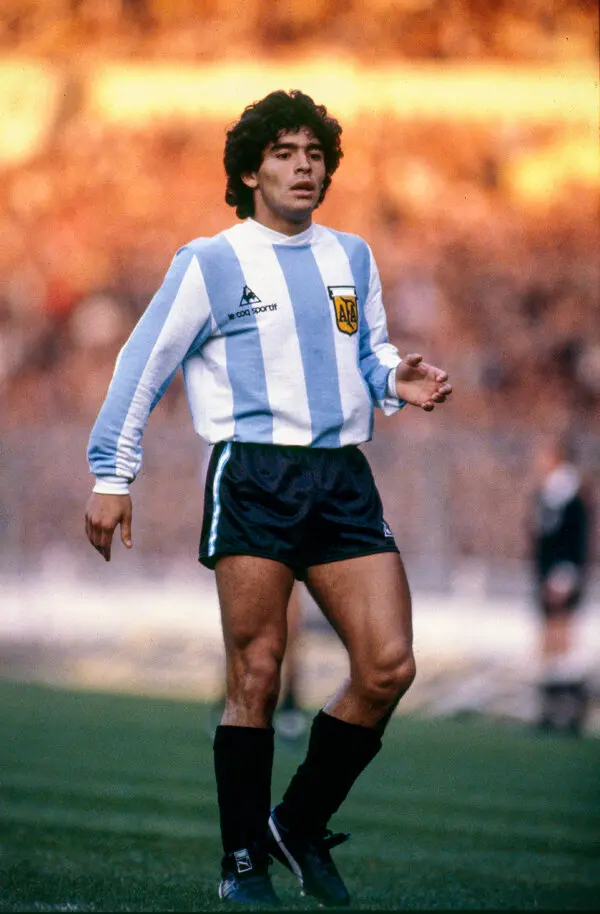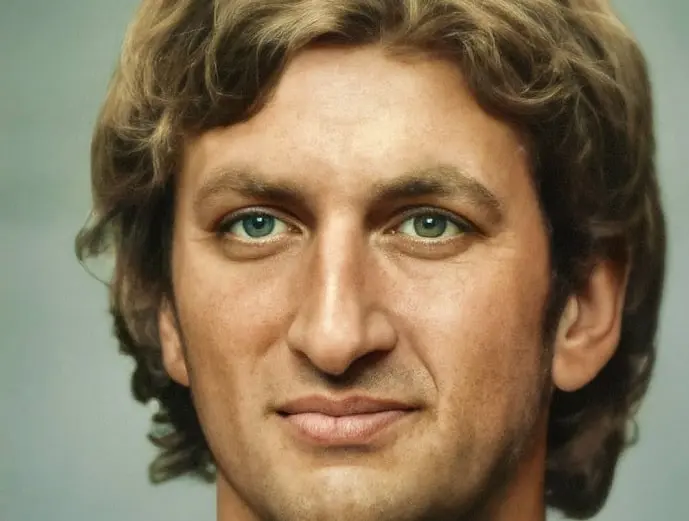
Early Life
Childhood
Born on October 30th, 1960, in the slums of Buenos Aires, Argentina, Diego Armando Maradona had humble beginnings. He was the first boy, after four girls, in a tight-knit family struggling to make ends meet. His love for football started early, with a gifted ball at three years old sparking a passion that would shape the rest of his life. At an age when most kids were learning to read, Maradona was already mesmerizing the local kids with his unrivaled football skills. By age eight, his extraordinary talent was discovered by a talent scout during a neighborhood match, which marked the genesis of an illustrious career.
Discovery of Talent
Growing up in a shantytown neighborhood in Buenos Aires, Argentina, Diego Armando Maradona’s knack for football was obvious from his toddler days. Barefooted, he’d kick oranges or rags stuffed with paper into a makeshift goal identified by rocks. His prodigious abilities caught the eye of a talent scout during one such street football game when he was only 8 years old. Maradona was swiftly ushered into Argentinos Juniors, a first-division football team, marking the dawn of a new era not just for him but for the entire football fraternity. This was undoubtedly the genesis of the legend, who would eventually captivate the world with his magical feat.
Early Football Career
Before the worldwide fame and the infamous ‘Hand of God’, Diego Maradona was just another football-crazy kid from the shantytowns of Buenos Aires, Argentina. He was discovered at age 8 by a scout of Argentinos Juniors, one of the city’s largest clubs. He quickly became a standout in the youth squads due to his prodigious dribbling skills and surgical precision with the ball. At only 15, Maradona made his professional debut, showcasing the same flashy yet intelligently calculated style of play that would distinguish him years later. From then on, he soared remarkably on an equally triumphant and tragic journey to stardom.
Read: The Inca Girl, Frozen For 500 Years
Rise to Prominence
Playing for Argentinos Juniors
In the whirlwind world of football, a tad of magic had begun to twiddle its toes at Argentinos Juniors, a Buenos Aires-based club. The magician in question, just 15 years old, exploded onto the scene in 1976, twirling around the field like a dervish; his name was Diego Maradona. Despite his tender age, he weaved through the opposition, his extraordinary skill with the ball earning him a stunning record of 116 goals in 166 appearances over five years. His prodigious talent and unyielding spirit began to shimmer, propelling him towards the pinnacle of football stardom.
National Debut and World Cup

Our Argentine wonderboy didn’t wait around long before sparking a lightning-quick ascent to universal recognition. Bursting onto the international scene, Diego hit the ground running in 1977, at just 16 years old, making his debut for the Argentina national team. However, his first significant trot onto the world stage was during the 1982 World Cup in Spain, where he netted twice and showcased his awe-inspiring skill set. A four-year period of meteoric rise then culminated in the 1986 World Cup in Mexico. Here, Maradona cemented his glory, scoring a notorious ‘Hand of God’ goal against England and spinning his way through the same team in an audacious solo run dubbed the ‘Goal of the Century’. This glistening tournament elevated him not just to the captaincy of Argentina but also to the status of a global football icon. His ability, charisma, and transcendent talent ignited Argentina’s triumph, securing their second World Cup win.
Transfer to Boca Juniors
In the year 1981, a significant shift in Maradona’s career took place that etched his name deeper into the annals of football history. Having displayed powerhouse performances with Argentinos Juniors, this young football maestro was signed by Boca Juniors, another Argentine sensation of that era. This was a dream come true for Maradona, as he always aspired to play for Boca Juniors from a young age. At Boca Juniors, he was quick to set the pitch ablaze with his stunning goals and exceptional footballing skills. This stepping stone in Maradona’s career marked a turning point, catapulting him into international fame. His year at Boca Juniors, though brief, was monumental in laying the foundations of his worldwide reputation and carving out his meteoric rise in the world of football. His carnival of success with Boca Juniors also marked his definitive entry onto the global stage, paving his way into the hearts of football fanatics around the globe.
International Acclaim
Maradona and Barcelona
The magic of Maradona didn’t truly start to permeate international airwaves until his exhilarating performance at Barcelona, one of the world’s most prestigious football clubs. He became the most expensive player in football history in 1982 when he was transferred to Barcelona for a whopping £5 million. Despite glitches like illness and injuries, his skills shone through, enthralling viewers worldwide. While at Barcelona, he played in 58 games and scored an impressive tally of 38 goals! But beyond his statistics, what left an indelible mark on the game was his extraordinary flair, his deft touches, and his powerful left foot that withstood the heavy tackles from the opposing team’s defenders. His spell at Barcelona turbocharged his career, catapulting him into the worldwide consciousness and setting the stage for a glorious football saga that would eventually encompass his triumphant World Cup chapters with Argentina.
Read: Who Was Nikola Tesla?
The Golden Era at Napoli
In the mid-1980s, a dazzling chapter began for the Italian football club Napoli when they welcomed the charismatic Diego Maradona into their fold. Before Maradona’s arrival, Napoli was considered an underdog team, and Italian football was primarily dominated by clubs from the north. This all came to a significant shift between 1984 and 1991. Guided by Maradona’s exceptional skills and character, Napoli went on to clinch its first-ever Serie A Italian Championship in 1987, a feat they repeated in 1990. This convergence of teamwork and Maradona’s brilliance was also witnessed on the global stage when Napoli triumphed in the 1989 UEFA Cup. Diego was at the zenith of his career, adored for his unpredictable style of play, firm leadership, and spectacular goals. The people of Naples idolized Maradona; murals of him are still scattered across the city today, a testament to his enduring legacy and the golden period he spearheaded. Maradona’s influence extended beyond football, as he became a beacon of hope for the less privileged of Naples, inspiring them to dream bigger. This era is forever etched in Napoli’s history as the Maradona years, a period of international recognition and glory largely credited to this Argentine maestro.
The World Cup Triumph of 1986
In 1986, the globe marveled as a certain Argentine wizard, Maradona himself, strutted across the soccer pitches of Mexico, enchanting audiences with his breathtaking play. Leading his team to victory, the tournament was dominated by his presence and his infamous “Hand of God” goal against England. His dazzling skill in the final against Germany sealed Argentina’s World Cup win, securing his place as a football legend.
Controversies and Personal Struggles
The “Hand of god”

During the 1986 World Cup quarter-final, Maradona stirred global controversy with an infamous trick to outwit England’s goalkeeper, Peter Shilton. The ball majestically found the net, not from his skilled foot but astoundingly, from his clenched fist! Maradona nonchalantly celebrated, leaving a multitude of befuddled Englishmen in his audacious wake. Replay cameras, however, impeccably captured the ‘soccer blasphemy’, leading Maradona to colorfully term it as a score ‘a little with the head of Maradona and a little with the hand of God’. This event, etched in football’s hall of fame, polarized fans, earning him as much ire as adoration!
Drug Abuse and Ban
Known for his brilliant talent in soccer, Diego Maradona lived off the field as unpredictably as he played on it, his life marred by numerous controversies. In the public eye, his triumphs were often overshadowed by his struggle with drug abuse. Maradona’s substance addiction first became public during the 1994 World Cup, when he was found guilty of ephedrine doping. The incident resulted in a 15-month suspension from football, a significant period of his career. This ban was one of the most controversial setbacks in his otherwise remarkable career, cementing his reputation as a troubled star.
Health Issues and Retirement
Burdened by a series of health problems, Diego Maradona bid farewell to his illustrious career in 1997, echoing the struggles of his personal life. His retirement was marred by battles with obesity and a consequential heart disease. In the early 2000s, gastric bypass surgery seemed to give him a brief respite. However, substance abuse still cast a dark shadow, taking a hefty toll on his health. His addiction to drugs, especially cocaine, set him on a dizzying descent, making him more famous for his off-pitch life. Dark episodes of alleged tax evasion also added an uneasy twist to his public image.
Legacy and Death
Post-football Career and Contributions
After his retirement, Maradona didn’t abandon the sport; he transitioned to coaching and mentoring. He wore the coach’s hat for Argentina in the 2010 World Cup and later for various clubs worldwide. Leaving a profound impact, he passed away in 2020, leaving behind an undying legacy in soccer.
Death and Global Mourning
The world bid a tearful farewell to this football maestro on November 25, 2020. Maradona’s abrupt departure sparked a universal outpouring of grief, transcending national borders and football loyalties. From Buenos Aires to Naples, fans held candlelit vigils and adorned their cities with murals in poignant tributes to their fallen hero.


